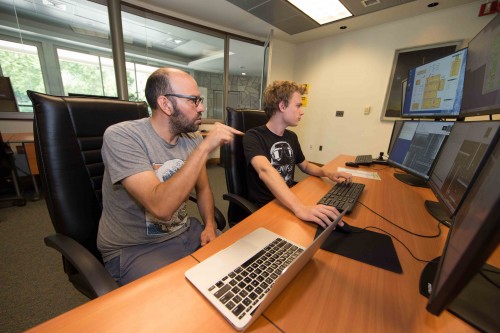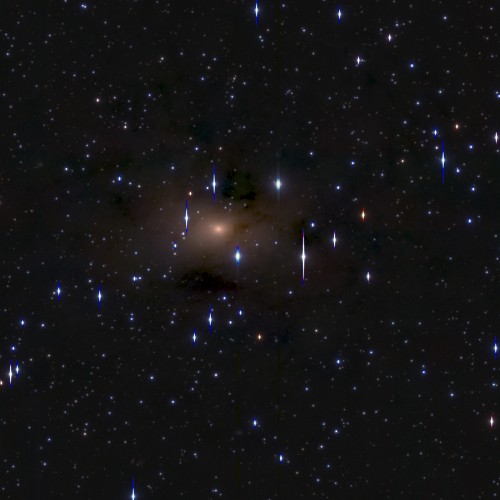- Date: 12 Feb 2016
- Comments: (0)
- Categories: For Everyone, Human Interest

Gemini South Intern Samuel Hinton (right) and Gemini Science Fellow Ricardo Salinas (left) join efforts to better understand galactic halos by studying globular clusters in the giant elliptical galaxy Maffei 1.
Although it is the closest giant elliptical galaxy to Earth, at a distance of about 10 million light years, scientists know very little about Maffei 1 as opposed to the photogenic Centaurus A, the second closest elliptical galaxy to us. Maffei 1, located in the same line of sight as the galactic disc of the Milky Way, is heavily obscured by gas and dust, and hidden behind a thick curtain of stars from our galaxy.
That’s why Samuel Hinton, from the University of Queensland, Australia, initiated his internship at Gemini South. His goal: to produce a list of globular cluster candidates, and their properties, in Maffei 1.
Hinton’s mentor, Gemini Science Fellow Ricardo Salinas, explains that globular clusters are the beacons that guide us in our understanding of galactic halos.
“At the distance of Maffei 1, these clusters appear more than a hundred times smaller than the ones we observe in our own galaxy,” says Salinas. “However, the use of sub-arcsecond images allow globular clusters to be ‘resolved,’ that is, they look slightly more extended than stars – but only slightly!” Salinas explains, and adds that, “Separating stars in our galaxy, globular clusters in Maffei 1, and background galaxies in an automatic fashion is a difficult job.”

The central 7 arcminutes of Maffei 1, heavily obscured by dust from our galaxy. The globular cluster system extends for tens of arcminutes.
For this reason, Hinton developed a data pipeline to classify Maffei 1 globular clusters using a machine learning processes. Using this, Hinton and Salinas can extract the globular cluster’s physical properties using photometric analysis. Fewer than 20 globular clusters in Maffei 1 have been studied in prior papers, “but one would expect the total number of globulars should be close to a thousand,” says Salinas.
This work will pave the way for a number of spectroscopic followup studies to determine which candidates actually belong to Maffei 1, as well as wider field studies encompassing the whole globular cluster system of Maffei 1. Additionally, higher resolution spectroscopy of massive global clusters will help to understand their internal kinematics, and the search for the ever-elusive intermediate mass black holes.
– With Ricardo Salinas and Samuel Hinton.






